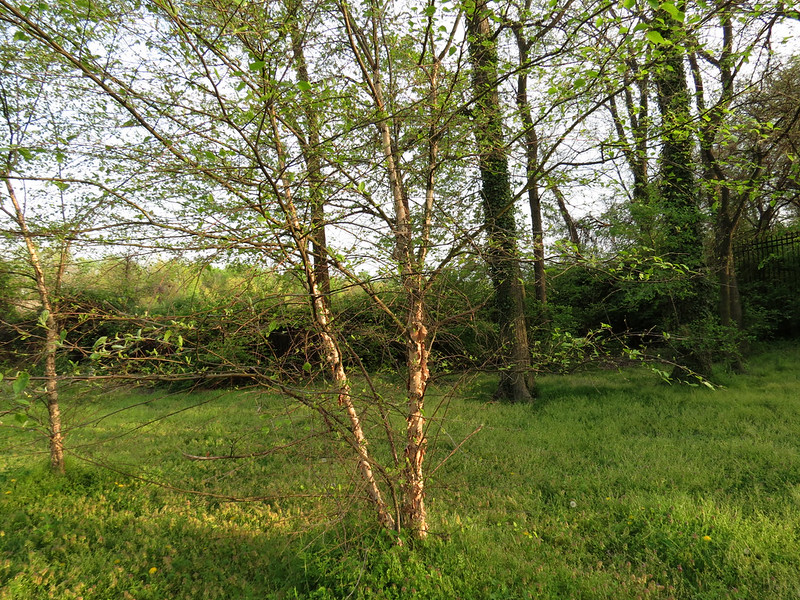Incorporating these extraordinary trees into the environment can pave the way for a balanced coexistence with nature.
Trees are robust and loyal soldiers that vigilantly play their part in combating ever-increasing pollution. However, with time, even these fierce soldiers have suffered the long-term effects of rampant global pollution.
Multi-stem trees have emerged as a viable option to combat this peculiar situation, as the enhanced advantage of multi-stems makes these trees more adaptable and effective compared to their counterparts.
However, there is still a large section of society that is unaware of the advantages of planting multi-stem trees. Therefore, this comprehensive guide is going to explore eight environmental benefits of planting a multi-stem tree.
1. Aesthetic Appeal
The visual allure of multi-stem trees, including the captivating multi-stem birch, is evidence of their unique and beautiful appearance. In contrast to single-stem trees, multi-stemmed trees display a branching design that initiates near the ground, giving rise to numerous stems.
Additionally, multiple stems impart a feeling of intricacy and variety to the tree’s shape. Each stem extends outward, constructing a network of stems and boughs that interlace in a visually absorbing manner.
This elaborate arrangement captivates the interest of casual onlookers and tree specialists alike. It beckons for a more intimate examination, drawing individuals to appreciate the tree’s innate architecture.
2. Adaptability
One of the outstanding attributes of multi-stem trees is their capacity to prosper in demanding circumstances. They have demonstrated an admirable resistance to diverse pressures, encompassing substandard soil conditions and metropolitan contamination.
Their innate flexibility enables them to bloom when alternative trees face difficulties. This renders them especially fitting for city settings, where soil quality and air conditions may be less than optimal.
According to a study, the multi-stemmed habit in trees is an important characteristic, especially in lowland dry areas, where stem abundance is related to stem turnover, a suite of physiological traits related to photosynthesis, and aboveground carbon pools.
3. Improved Stability and Durability
The trees resist storms and winds since the multiple trunks ensure a lower center of gravity. Therefore, the trees are less likely to topple during extreme weather conditions.
Moreover, the extensive root network created by multiple stems further anchors the tree in the ground. The robust structure provides redundancy that enables multi-stem trees to better survive damage.
A blended canopy formed by multiple narrow stems ensures the trees flex better during windy weather conditions.
Multi-stem tree strong structures ensure they are better equipped to handle and withstand extreme conditions. These inherent traits improve stability and longevity, making multi-stem varieties an ideal choice.
4. Promote biodiversity
The intricate structure of multi-stemmed trees creates microhabitats ideal for diverse wildlife. The assorted crevices and recesses in trunks and boughs provide cover, breeding grounds, and secluded spots for countless species.
Birds frequently construct their nests in the branches, whereas insects discover sanctuary in the bark. Small mammals such as squirrels and bats might also avail themselves of these areas.
In metropolitan settings, where verdant areas are restricted, multi-stem trees evolve into vital sanctuaries for wildlife. They offer a haven amidst the urban expanse, bolstering local biodiversity and fostering a more robust, harmonized ecosystem.
5. Versatility
Multi-stem trees have tremendous versatility when it comes to garden design. Their development pattern, which leans towards being more condensed when contrasted with single-stem trees, permits inventive uses in landscaping.
They can be trimmed and sculpted to accommodate a broad spectrum of objectives. For example, they can be employed to restrict areas, establish seclusion barriers, or even serve as wind buffers, amplifying the effectiveness of outdoor spaces.
6. Low Maintenance
Multi-stem trees grow in a confined area and thus require fewer resources to maintain once they are completely established. Its compact structure supports the trees, eliminating much of the need for regular support.
Also, normal pruning is done just to maintain a good shape. It is also worth noting that the multi-stem enables the trees to respond better when corrective pruning is done.
Additionally, it is easy to pull out a damaged stem, leaving the remaining ones for recreation of the typical canopy. In general, these multi-stem trees are very hardy.
7. Preventing Soil Erosion

The dense canopies and an extensive root system make multi-stem trees better suited to preventing soil erosion. Their roots help hold soil in place, while their canopy coverage shields the ground from rain and wind.
The trees’ effectiveness is greatly improved by the multiple trunks emerging close together, thus allowing them to cover more ground with stabilizing roots and soil-protecting branches. This extensive and overlapping structural network limits soil exposure and slows the movement of rainfall over the surface.
8. Improving Air Quality
Trees are essential when it comes to carbon dioxide absorption and the release of oxygen in the photosynthesis process. Moreover, harmful pollutants are filtered from the general atmosphere, improving air quality.
For instance, in most urban areas, smog and pollution reduction has been significantly reduced through promoting the planting of multi-stem trees. Issues relating to air quality are adequately mitigated by ensuring you integrate the trees into the urban green spaces.
Conclusion
The rising demand for multi-stem trees has drastically enhanced environmental preservation and modern landscaping methods. Multi-stem trees bring unique aesthetic qualities and visual interest to the landscape. With their adaptability, durability, and distinctive beauty, multi-stem trees are valuable additions to gardens, parks, commercial sites, and other landscapes.
Incorporating these extraordinary trees into the environment can pave the way for a balanced coexistence with nature, enjoying the numerous advantages of multi-stem trees.


Join the conversation!